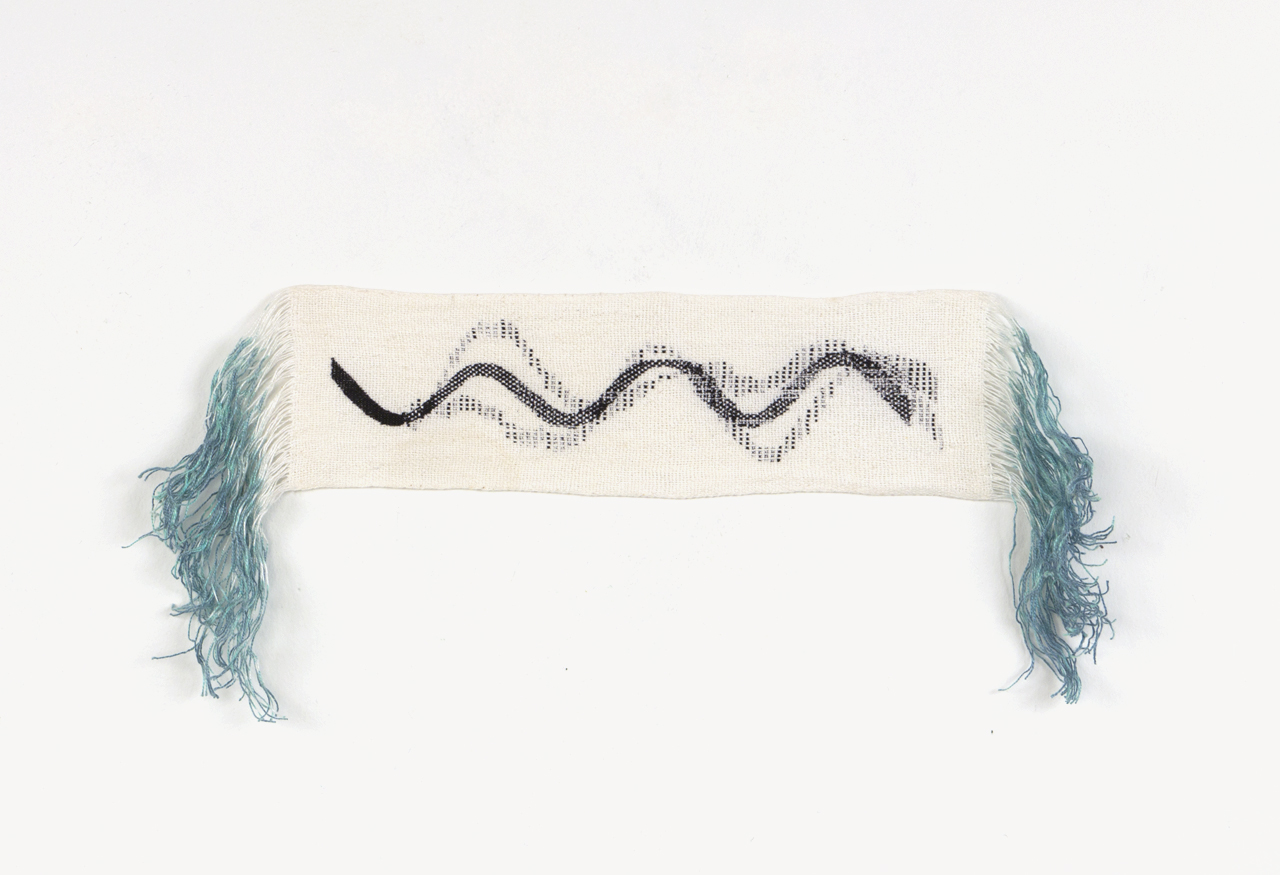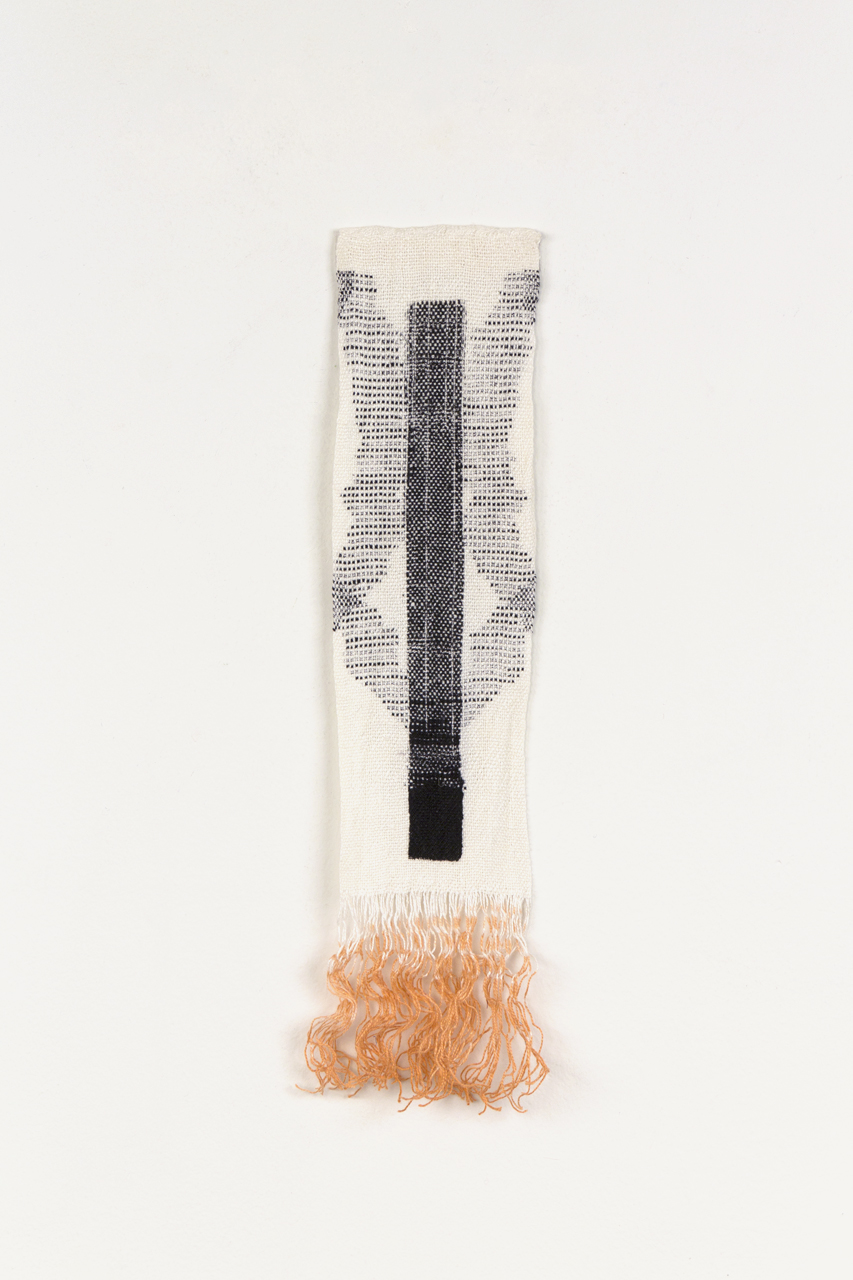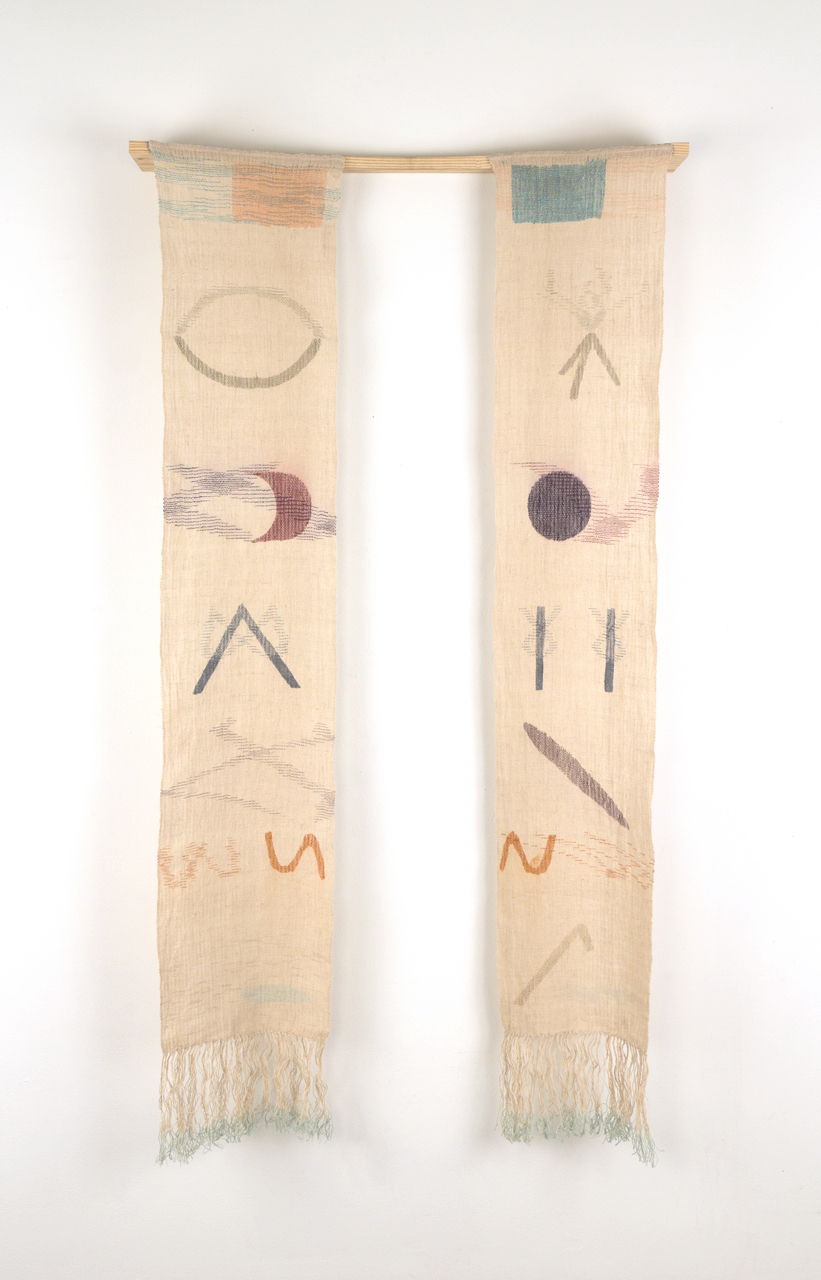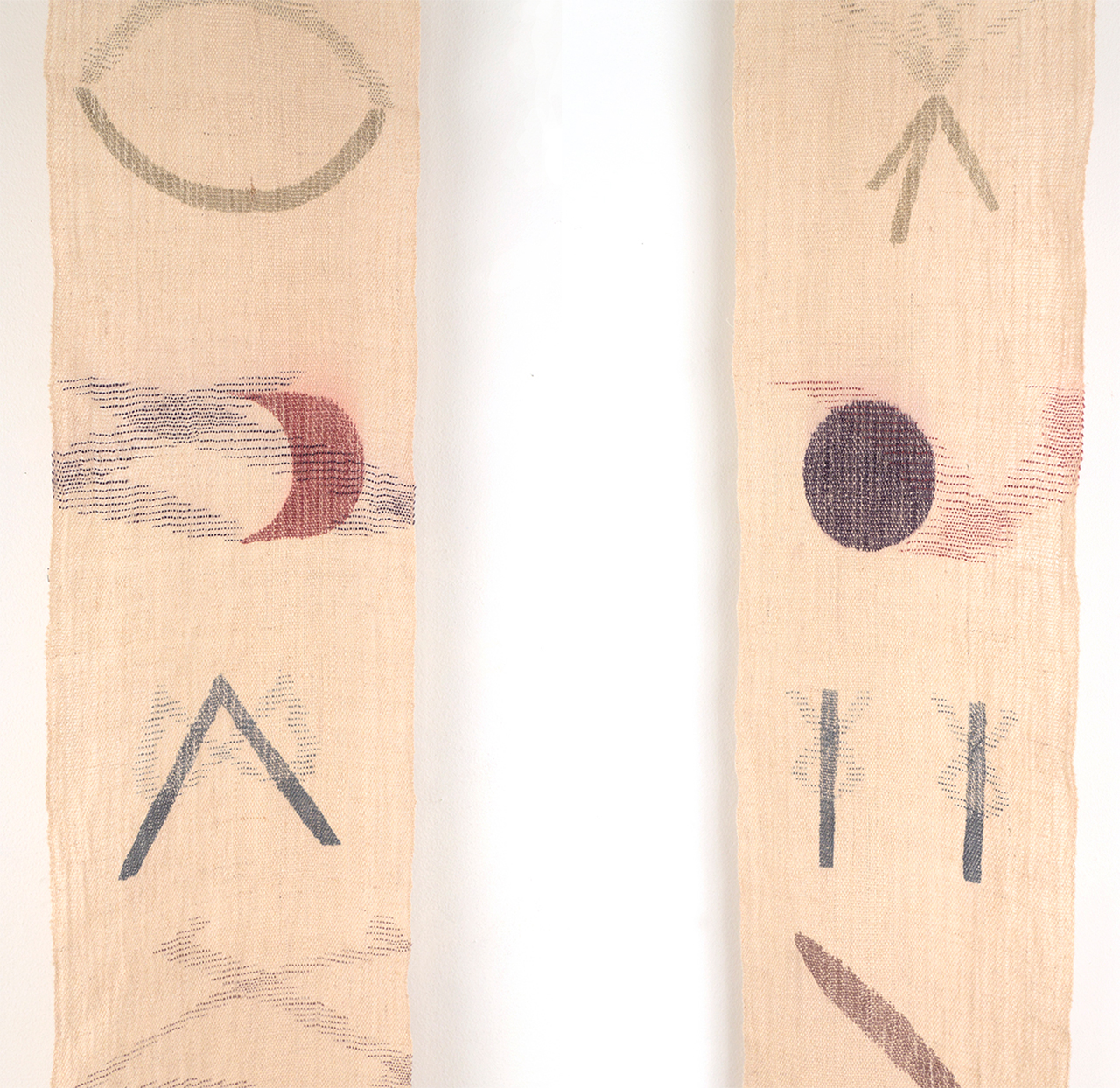The Loom & I Draw Together

#5
woven and rewoven bleached linen, mx dye
11" (without fringe) / 21" (with fringe) x 3.75"
2014
woven and rewoven bleached linen, mx dye
11" (without fringe) / 21" (with fringe) x 3.75"
2014

Here a cloth was woven in it’s entirety and then a mark with dye was made, this mark is the darker and more defined waving line through the center of the piece. Then the cloth was unwoven almost to the end of the line and then woven again. This unweaving and reweaving shifted part of the mark and was under the control of the loom rather than me. How many times can my drawing and the loom’s drawing meet in one piece? What happens when evidence of our labors are both separated and united?

I Draw a Square & the Loom Redraws it Three Times
woven and rewoven bleached linen, mx dye
34" (without fringe) / 43" (with fringe) x 7.5"
2014
woven and rewoven bleached linen, mx dye
34" (without fringe) / 43" (with fringe) x 7.5"
2014
The loose fringe is included and called attention to through color as a way to honor the loom and the weaving process.

Loom Drawing
woven and rewoven bleached linen, mx dye
9.5" x 7.5"
2014
On a previous bit of cloth, I painted an image and then
undid the weaving. The weft threads (shown here in the
vertical direction) were put onto a fresh warp. Since there is
no evidence of my original mark making, I consider this a
drawing from the loom and I was it’s tool. I only placed the
threads as they naturally fell and made no considerations of
my own on how they landed. This was an investigation of
one way that the loom can have as much control as
possible. I wondered how I could become a facilitator rather
than a leader.woven and rewoven bleached linen, mx dye
9.5" x 7.5"
2014

Where Spaces Meet
woven and rewoven double cloth in linen, mx dye
each: 8" (without fringe) / 14" (with fringe) x 8"
2014
Woven as a double cloth in natural and bleached linen, this
piece explores the dimensionality of cloth by using the
pick‐up technique. In double cloth with pick‐up, two
separate cloths meet and join together to make one
reversible cloth. Exploiting that idea, I joined two cloth,
marked with dye where they met, and then everything was
unwoven. In reweaving, the meeting place was shifted. The
result has evidence of a past connection along with the new
connection. Just as tradition and contemporary art inform
on another, these white and brown cloths are
interconnected.woven and rewoven double cloth in linen, mx dye
each: 8" (without fringe) / 14" (with fringe) x 8"
2014

#4
woven and rewoven bleached linen, mx dye
11" (without fringe) / 14" (with fringe) x 3.75"
2014
woven and rewoven bleached linen, mx dye
11" (without fringe) / 14" (with fringe) x 3.75"
2014

We Talk Together
woven and rewoven hemp, ms dye, pine board
each: 60" x 36"
2014
woven and rewoven hemp, ms dye, pine board
each: 60" x 36"
2014
Here, the loom and I investigated how our drawings could relate to each other. After I wove a section and marked it with dye, the techniques of unweaving and reweaving were experimented with. Sometimes the weft (horizontal) threads of the two panels were swapped onto warp (vertical) threads of the opposite panel, causing the drawings to overlap. Sometimes the work was unwoven only part of the way before it was rewoven. Still other times a section was completely unwoven and then rewoven above the initial drawing to have a mirror effect. This was my first attempt at making the loom’s hand and labor more apparent in the final work. The images closest to the fringe are the beginning, and by the top I felt a much closer understanding of our mutual co‐dependence.

The three different weaving and reweaving techniques that are explained in the previous image are shown here. The top gray ones are the mirroring effect, the circle and moon shape show the two different drawings overlapping each other, and the images just below those show what happens when a mark is only partially unwoven before it is rewoven again.